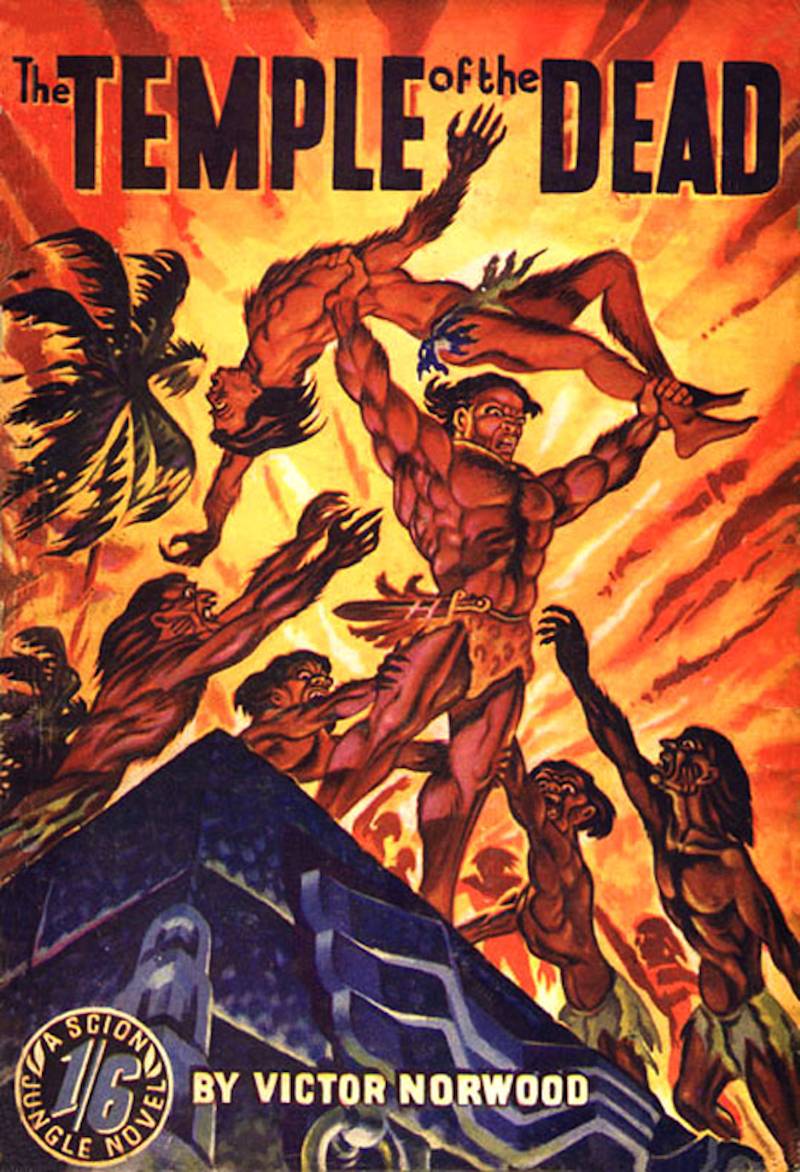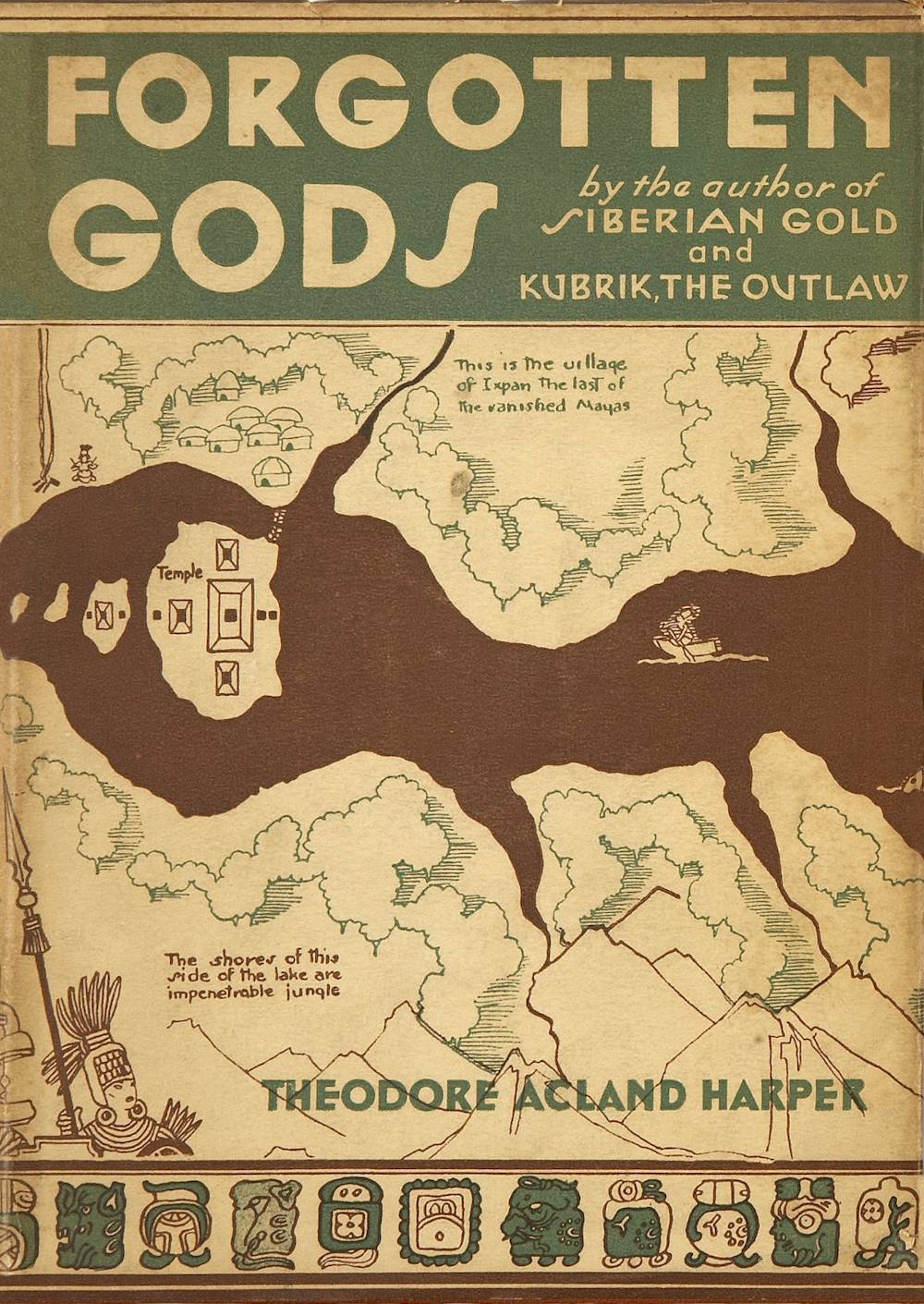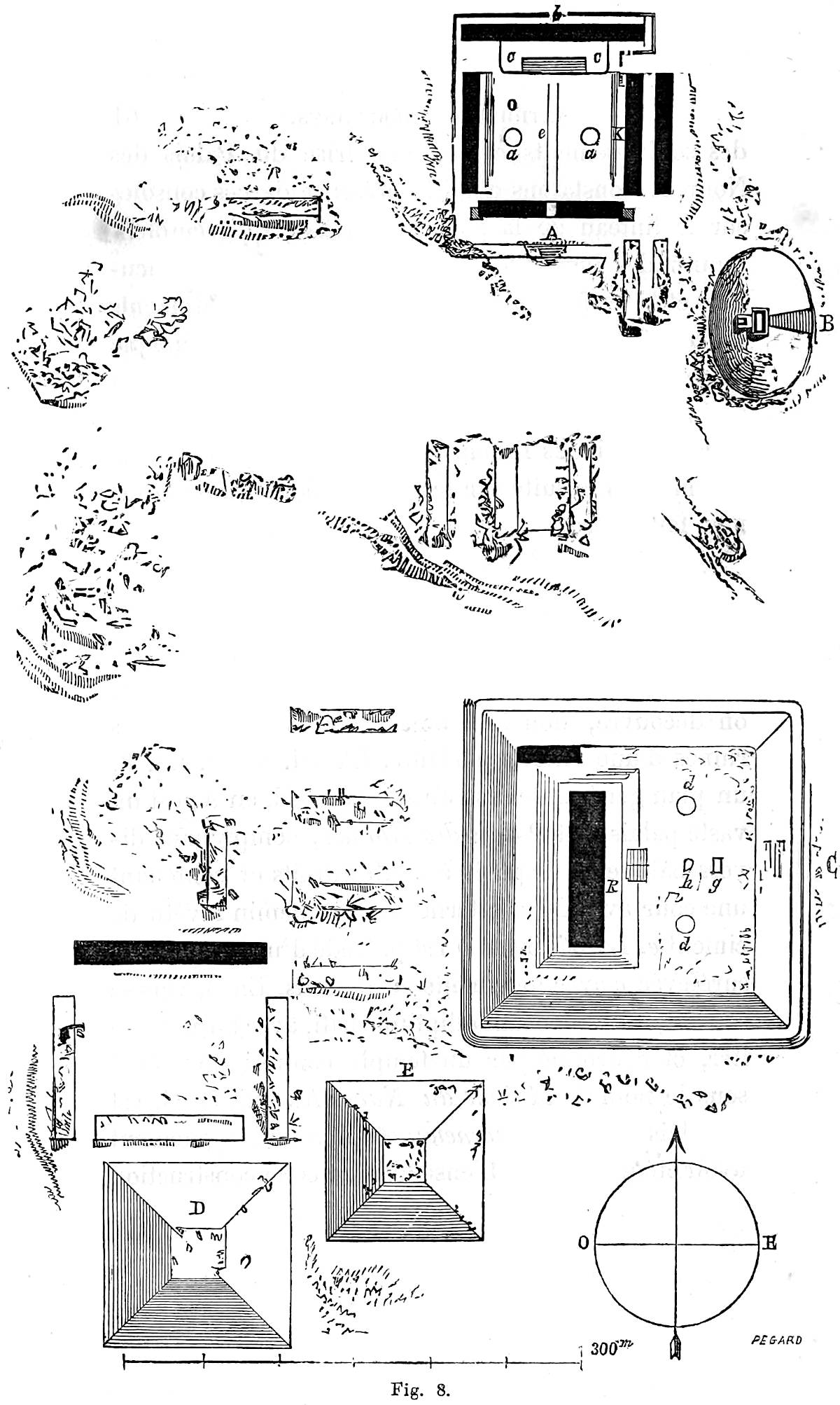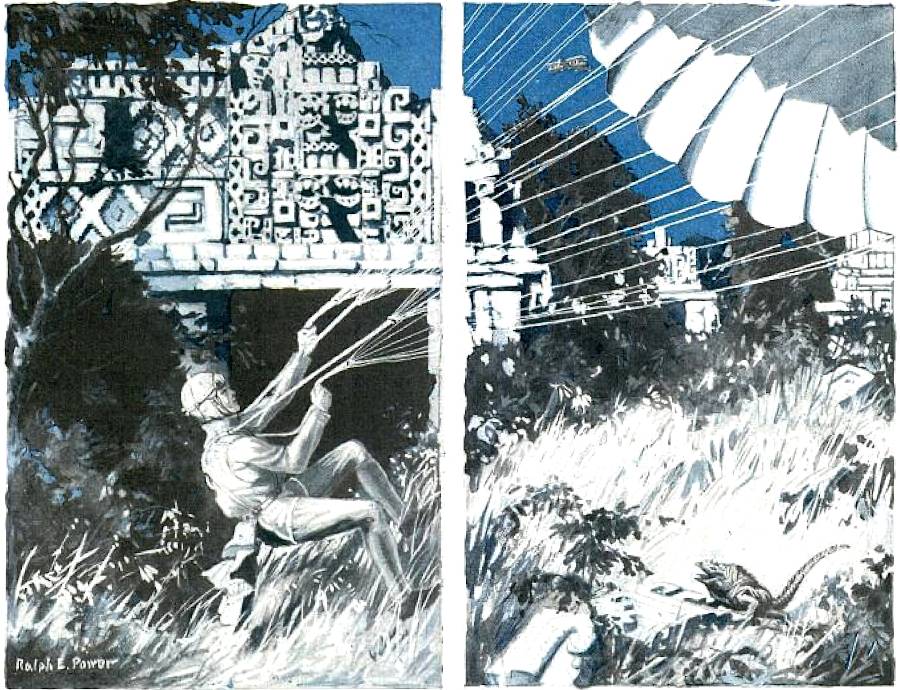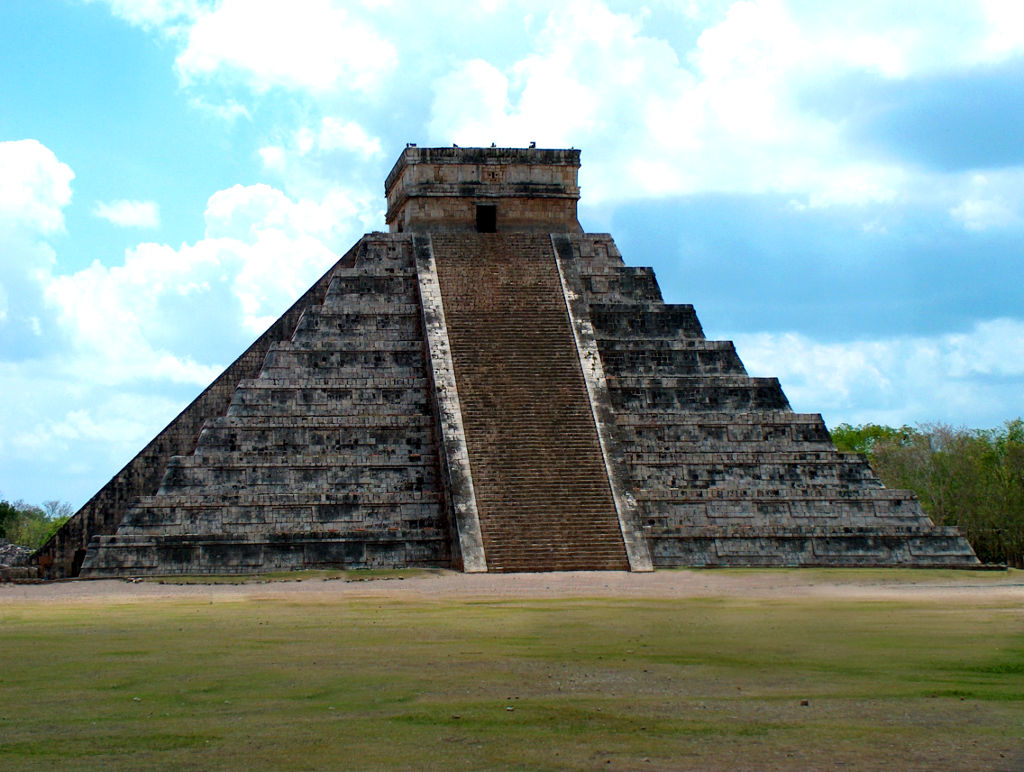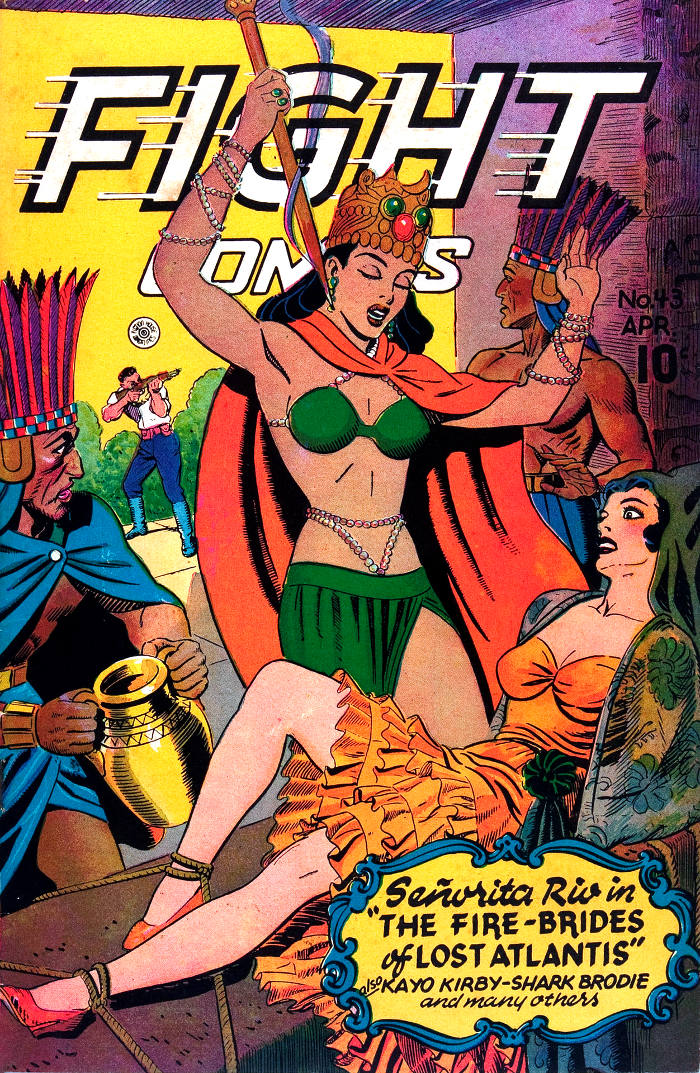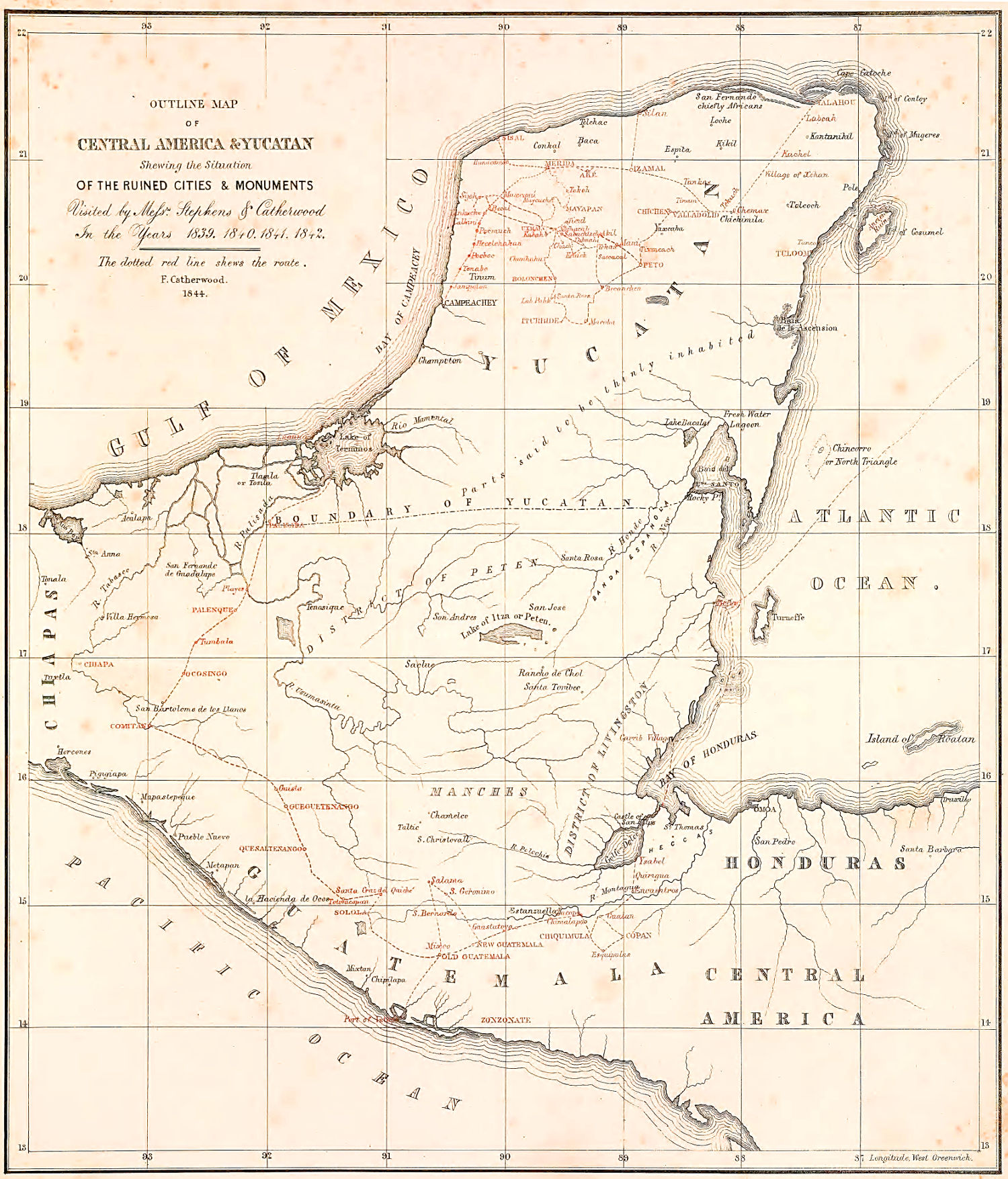
From Views of Ancient Monuments in Central America, Chiapas and Yucatan
Tag: Mayans
Temple of the Dead
Forgotten Gods
Mayan Temple Grounds
Jumping into the Mayan Jungles
Vandenberg, Alibi, 1985
El Castillo, Yucatan, 2005
Some photos I took back in 2005 on a visit to Chitzen Itza, Yucatan. The following year, tourists we not allowed to climb the structure.
Fight Comics, No. 43, April, 1946
Colossal Head at Izamal, 1844
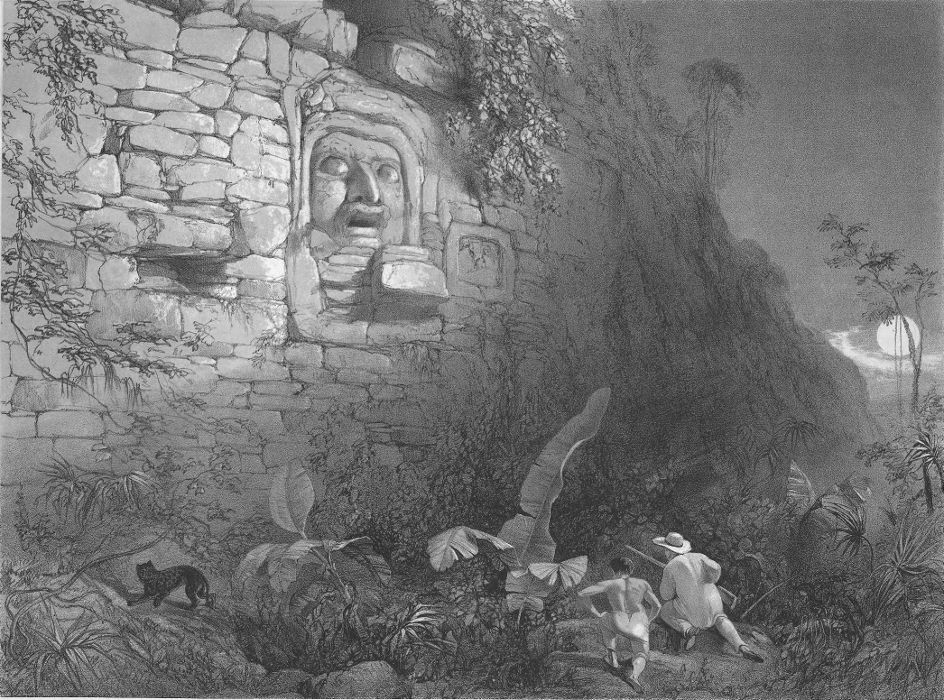 From Views of ancient monuments in Central America, Chiapas and Yucatan
From Views of ancient monuments in Central America, Chiapas and Yucatan
COLOSSAL HEAD, AT IZAMAL.
ON STONE, BY H. WARREN.
Izamal, at the height of its prosperity, must have been one of the most important of the Indian cities of Yucatan. There is abundant testimony to prove that it was inhabited at the time of the Spanish conquest. There are still remaining several mounds, one of which is the largest in Yucatan, but so dilapidated and disfigured, as to defy accurate measurement : it may be about seven hundred feet long and sixty high. It is said to contain interior chambers and colossal statues ; but no entrance at present exists to these subterranean apartments. The great church and convent of the Franciscan monks stands on the upper platform of one of these ancient teocalli, and the open area fronting the church is probably not less than two hundred feet square, surrounded on three sides by an open colonnade, forming a noble promenade, overlooking the modern city of Izamal and the surrounding country to a great distance. On the side of a mound about two hundred feet long, and which formerly had stone and stucco ornaments from one end to the other, is the Colossal Head — perhaps of some deity — represented in the plate : it is seven feet eight inches in height, and seven feet in width. A stone, one foot six inches long, protrudes from the chin, intended perhaps for burning copal on.
Castle at Tuloom, 1844
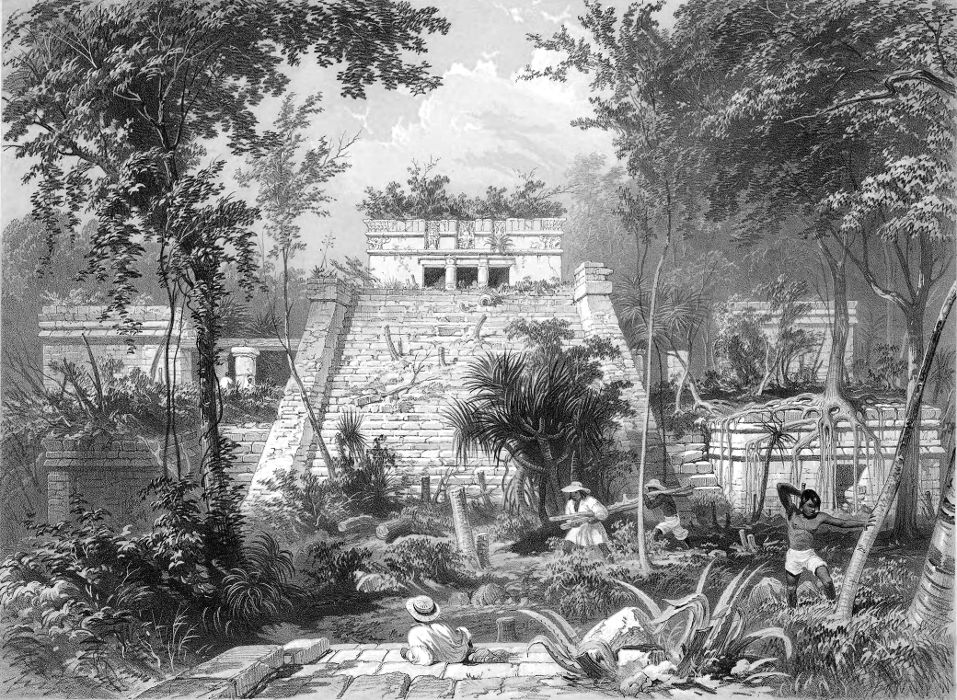 From Views of ancient monuments in Central America, Chiapas and Yucatan, 1844
From Views of ancient monuments in Central America, Chiapas and Yucatan, 1844
CASTLE, AT TULOOM.
ON STONE, BY A. PICKEN.
The ruined City of Tuloom is situated on a ledge of rocks on the eastern shore of Yucatan. The building given in Plate XXIII., although called a Castillo, or Castle, was, there can be little doubt, a place used for the religious ceremonies of the Indians. At the time the drawing was made, trees obstructed the view, which had to be cut down before the design of the edifice could be made out. Continue reading “Castle at Tuloom, 1844”
